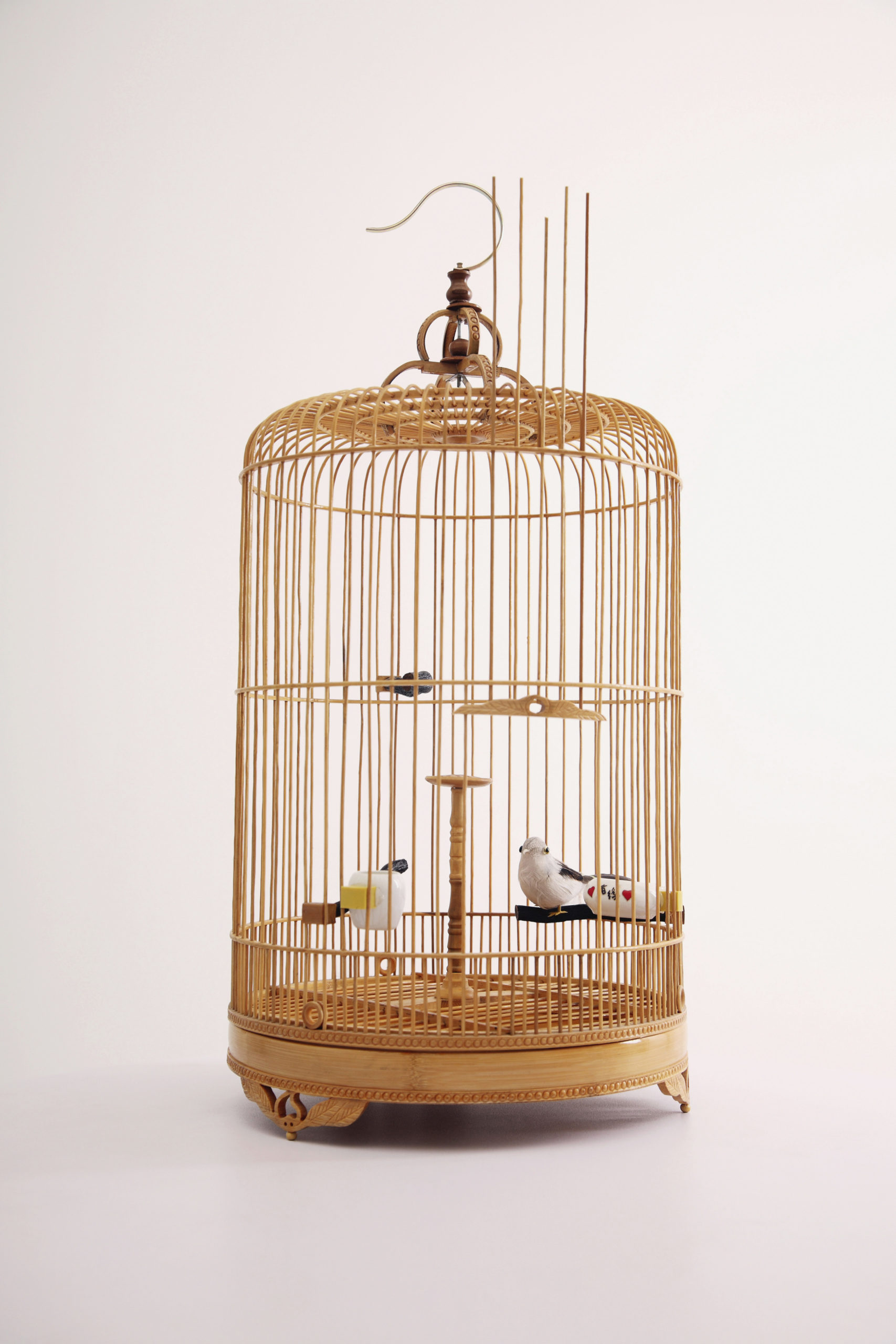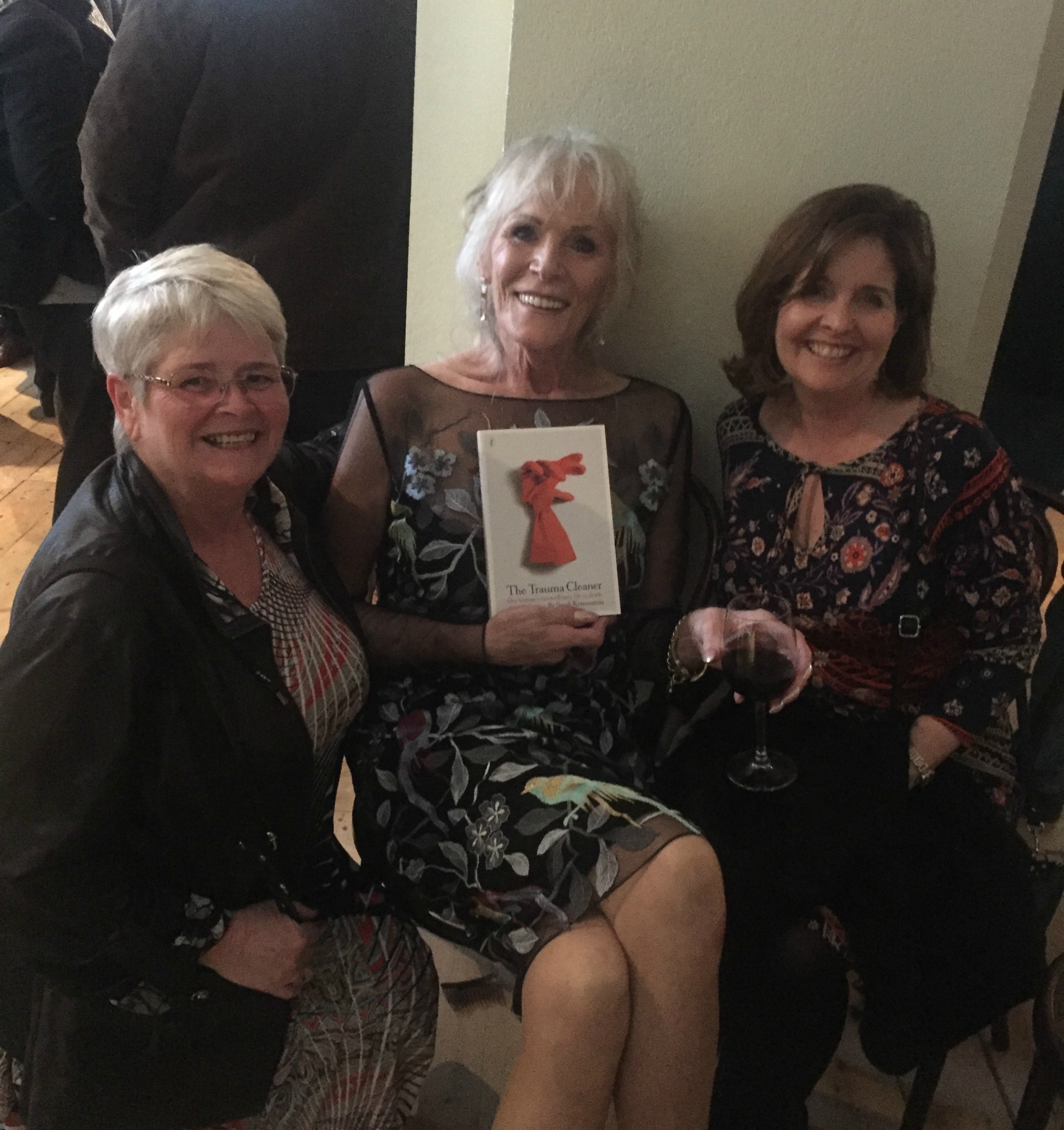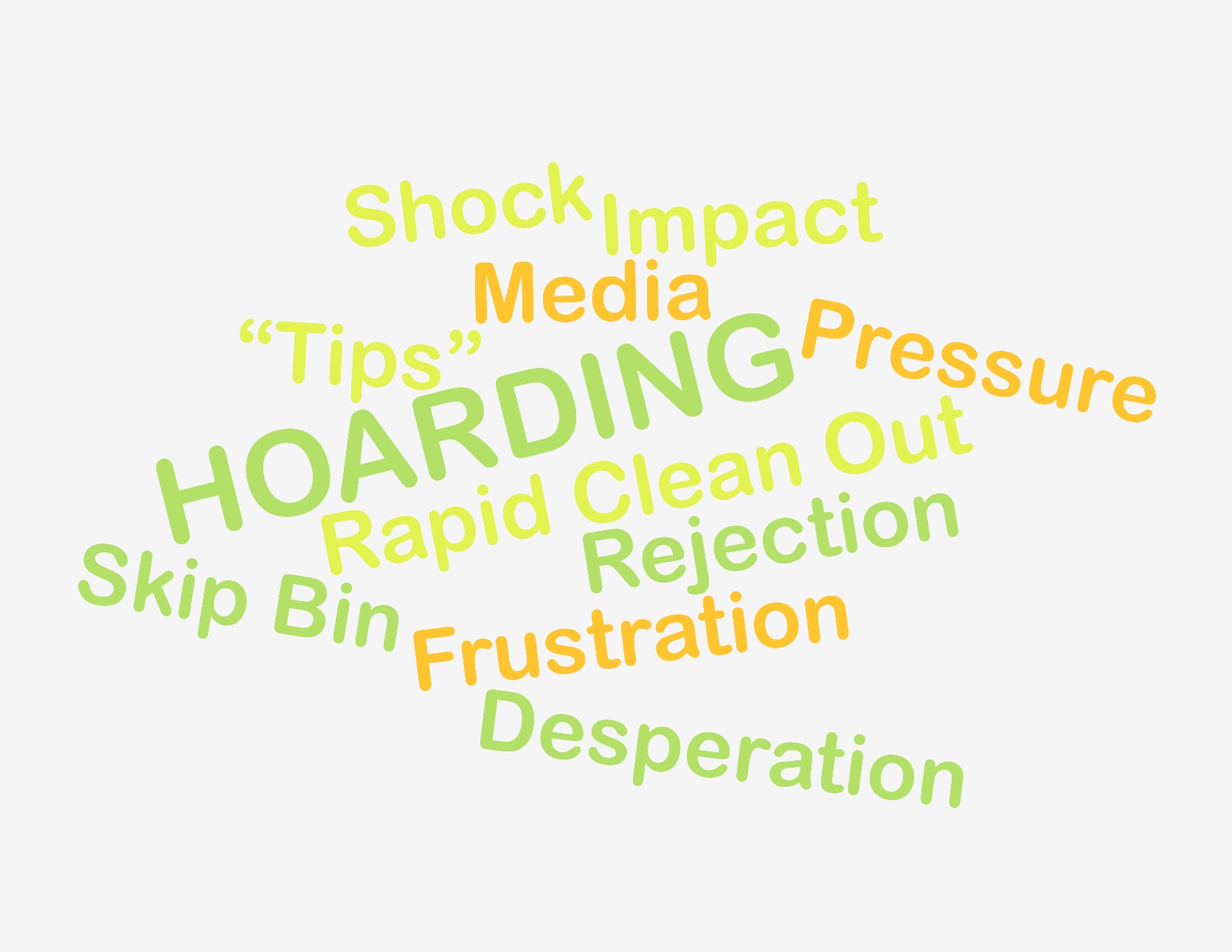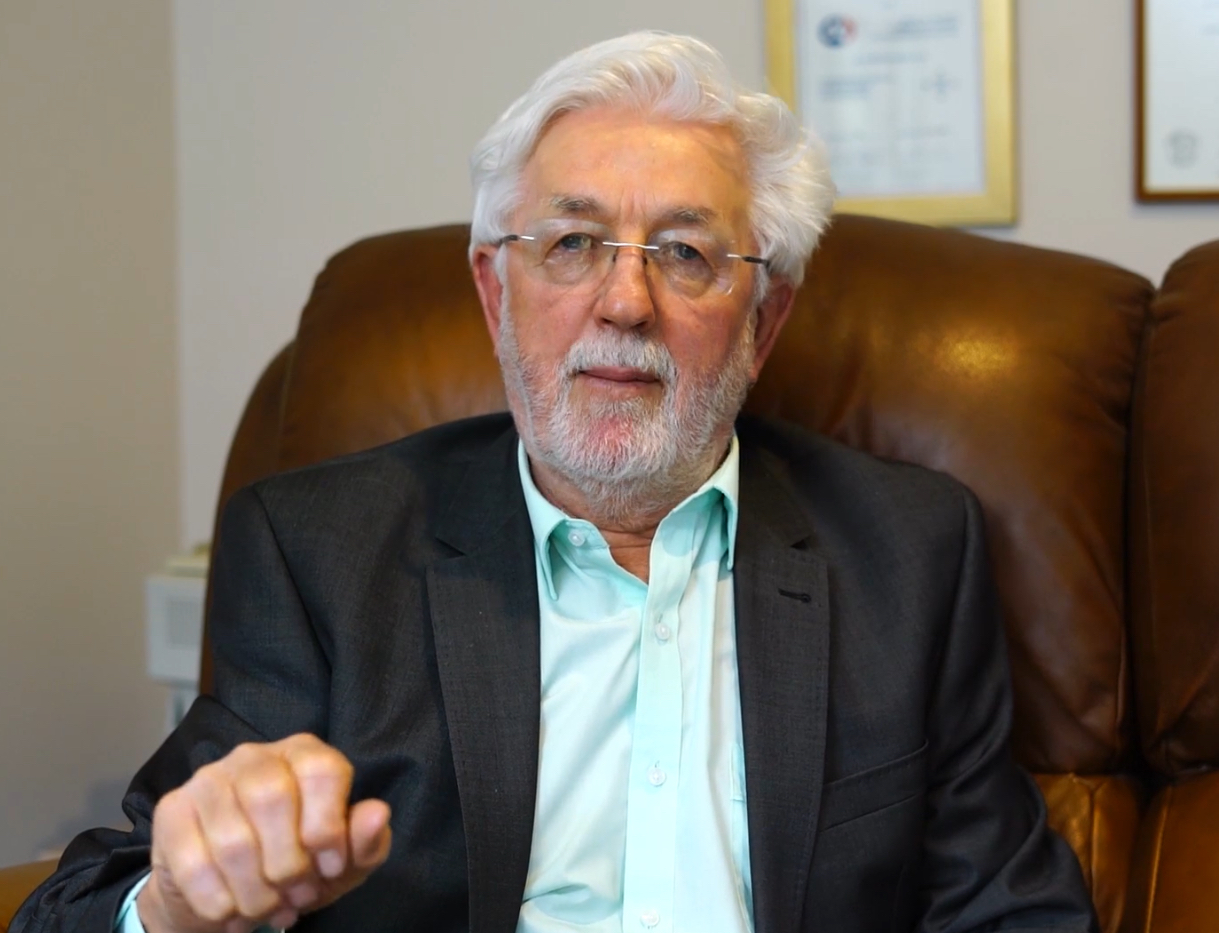Most of us admit that we have too much stuff. Some of us even complain that the clutter causes us stress. So why do we continue to acquire and find it so hard to let things go? What is the meaning of all this stuff?

Randy Frost with Wendy Hanes (L) & Angela Esnouf (R)
I had the pleasure of seeing Randy Frost, PhD, speak in Sydney in 2016. Randy Frost is a Professor of Psychology at Smith College in the USA, and an internationally recognised thought leader on the treatment of hoarding. I have followed his work for many years. His live workshop was outstanding. He has the rare ability to take a complex issue and make it easy to understand.
One of the things he talked about was the meaning of possessions. This is important because while we all feel attached to our possessions, people who hoard closely link their identity to the things they own. Frost believes it’s a myth that people who hoard surround themselves with worthless rubbish. He says people who hoard save exactly the same things as the rest of us (clothes, newspapers, books, containers, etc.) just in significantly greater quantities. He asserts that it is the sentimental, instrumental and intrinsic value that we attach to stuff that makes it so hard to let go of.
Sentimental
Sentimental items remind us of something. They have a magical quality that transcends their physical characteristics. A ticket stub, for example, is just a piece of paper but the meaning is in the essence – the association with the event and the memories that go along with it. Most of us know that we don’t need that ticket to be able to enjoy the memory, but for people who hoard, losing the actual ticket stub can feel like losing everything attached to it.
Instrumental
People who hoard overestimate the instrumental value of items. They look at a toilet roll and think, “This could have a use and it would be wasteful to throw it away”. According to Frost, fear of waste is the single biggest predictor of hoarding severity.
Intrinsic
The third factor is the intrinsic value of objects. We all own completely useless objects simply because we think they are beautiful or interesting, but people who hoard may see unique qualities in objects many of us would find completely mundane and that can make it difficult to let even the most ordinary item go. Frost gives the example of a bottle cap. Once it’s done it’s job of sealing the bottle, most of us are happy to let it go, but a person who hoards may appreciate the colour, shape or other characteristics so much that they can’t possible consider parting with it.
When we combine this deep connection with objects with the typical processing deficits that go along with Hoarding Disorder, we can start to understand how the clutter builds. The focus is firmly on individual items with no regard for the big picture. Ultimately it is this disconnection between the individual items and the impact they have on the function of the home which leads to the decline.
Wendy Hanes, Skeletons in the Closet and Hoarding Home Solutions







